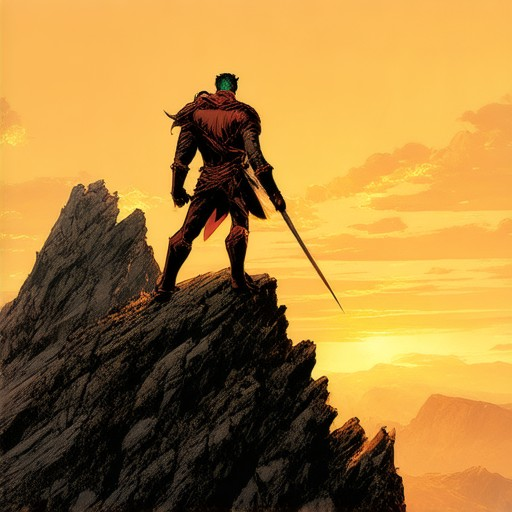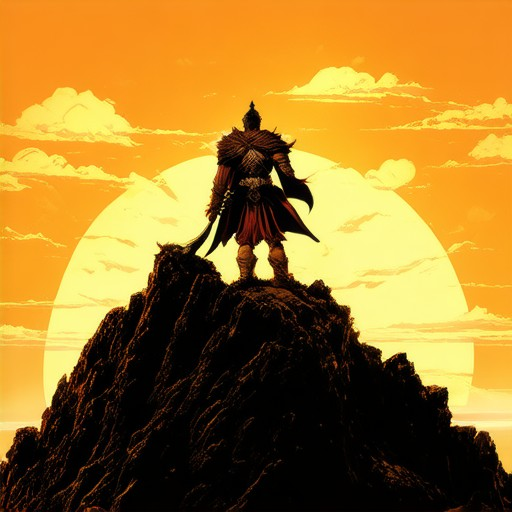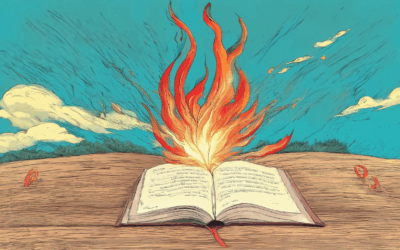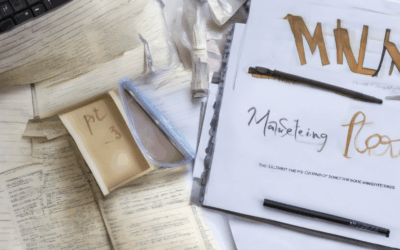Unlocking the Power of the Hero’s Journey: A Comprehensive Guide to Writing the Hero’s Journey in Creative Writing
Key Takeaways
- The Hero’s Journey is a transformative storytelling framework by Joseph Campbell, guiding writers through a universal narrative structure.
- Comprising 12 stages, it helps create layered characters and compelling plots, making stories universally relatable.
- Begin in the Ordinary World, where heroes face familiar settings before their adventures begin.
- The Call to Adventure disrupts normalcy, sparking the hero’s quest.
- Heroes often refuse the call, revealing their fears and responsibilities.
- Meeting a Mentor provides crucial guidance, equipping heroes for their journey.
- Cross the Threshold to enter the adventure, confronting new challenges.
- Navigate Tests, Allies, and Enemies, shaping the hero’s growth.
- Approach the Inmost Cave, readying for the climactic challenge.
- Face the Ordeal, overcoming the hero’s greatest fear.
- Receive a Reward, empowering the hero’s return.
- Traverse the Road Back, bringing newfound wisdom home.
- Undergo Resurrection, transforming and renewing the hero.
- Return with the Elixir, enriching the ordinary world with newfound knowledge.

How to Write Your Own Hero’s Journey
The Hero’s Journey is a storytelling framework that has been used by countless authors to create compelling narratives. To write your own hero’s journey, follow these steps:
- Ordinary World : Begin by establishing your hero’s daily life. What does their routine look like? Who are the important characters in their life? Show their environment and relationships to ground the reader in the hero’s reality.
- Call to Adventure : Introduce the disturbance that disrupts the hero’s ordinary life. This could be a sudden event, a visitor, or a mysterious occurrence that forces the hero to leave their comfort zone.
- Refusal of the Call : Have the hero hesitate or resist the call to adventure. They may doubt themselves or believe others are better suited for the task. This shows vulnerability and makes the hero relatable.
- Meeting the Mentor : The mentor appears, offering guidance and essential tools or advice. This figure can be a wise character, a magical entity, or an unexpected ally who prepares the hero for the challenges ahead.
- Crossing the Threshold : The hero crosses into the special world, facing a significant barrier. This could involve a dangerous journey, a magical portal, or a major decision that changes their trajectory.
- Tests, Allies, and Enemies : In the special world, the hero encounters challenges, allies, and foes. Each test strengthens the hero and reveals their character. These encounters should vary to keep the narrative engaging.
- Approach to the Inmost Cave : The hero reaches the climax, confronting their greatest fear or enemy. This is a pivotal moment where past lessons are applied to overcome this obstacle.
- Reward of the Hero : After overcoming the final challenge, the hero receives a reward—a treasure, knowledge, or an ally—that aids in achieving their goal.
- Resurrection : The hero returns transformed, bringing back something valuable to their ordinary world. This demonstrates personal growth and the impact of their journey.
- Journey Back with the Elixir : The hero navigates the return journey, applying their newfound strengths to their home. This phase highlights ongoing growth and the integration of their experiences.
- Transformation : Reflect on the hero’s evolution. How have they changed? What impact will these changes have on their world?
- Resolution : Conclude with the hero’s return, sharing their story and the elixir of life. This resolution ties up loose ends and emphasizes the hero’s growth.
By following these steps, you can craft a rich and meaningful Hero’s Journey, capturing the essence of transformation and growth.
The 12 Steps of the Hero’s Journey
- 1. The Ordinary World – The protagonist is introduced to their normal life before the adventure begins.
- 2. The Call to Adventure – A disturbance or event disrupts the ordinary world, prompting the hero to leave.
- 3. Refusal of the Call – The hero hesitates or refuses the call, fearing the unknown or potential dangers.
- 4. Meeting the Mentor – The hero encounters a mentor who provides crucial guidance and prepares them for the journey.
- 5. Crossing the Threshold – The hero crosses a symbolic boundary, entering the special world where the adventure takes place.
- 6. Tests, Allies, and Enemies – The hero faces tests, meets allies, and encounters antagonists.
- 7. Approach to the Inmost Cave – The hero reaches the final stage of the journey, often symbolized by a dangerous place.
- 8. Ordeal – The hero faces their greatest challenge, often a life-or-death situation.
- 9. Reward – The hero gains a powerful object or ability that helps them achieve their goal.
- 10. The Road Back – The hero begins the return journey, possibly with new knowledge or motivation.
- 11. Resurrection – The hero confronts their final trial, often a moment of self-realization or sacrifice.
- 12. Return with the Elixir – The hero brings the elixir or prize back to the ordinary world, completing the journey.

What is an example of a hero’s journey?
The Hero’s Journey is a narrative formula that has been used effectively in storytelling for centuries. It consists of a series of stages that a protagonist goes through on their quest, ultimately leading to personal growth and transformation. Below is a breakdown of the 12 steps of the Hero’s Journey as outlined by Joseph Campbell in “The Hero with a Thousand Faces”:
- The Ordinary World : The hero lives a normal life, often with a calling or desire to go on a journey.
- The Call to Adventure : The hero receives a message or call that sends them on a quest, often from a mentor or a magical event.
- Refusal of the Call : The hero hesitates or refuses the call, fearing the unknown or the risks involved.
- Meeting the Mentor : The hero encounters a wise figure who provides guidance and prepares them for the journey.
- Crossing the Threshold : The hero enters the special world where the main adventure begins, often facing trials or obstacles.
- Tests, Allies, and Enemies : The hero faces challenges, makes allies, and encounters enemies along the way.
- Approach to the Inmost Cave : The hero reaches the final stage of the journey, preparing for the greatest challenge.
- The Ordeal : The hero faces the biggest test, often a life-or-death situation, where they confront their fears and strengths.
- Reward : The hero gains a gift or insight that helps them move forward in the journey.
- The Road Back : The hero begins the return journey, possibly bringing back something important to their community.
- Resurrection : The hero faces a final trial or transformation before achieving their goal.
- Return with the Elixir : The hero returns home, bringing back what they’ve learned or obtained, transforming their life.
An excellent example of the Hero’s Journey is the story of Luke Skywalker from Star Wars: A New Hope . His journey mirrors the 12 steps, starting with his ordinary life on Tatooine and culminating in his triumph over Darth Vader, ultimately becoming a hero.
Here’s how Star Wars exemplifies the Hero’s Journey:
- The Ordinary World : Luke Skywalker lives a simple life as a farm boy on Tatooine.
- The Call to Adventure : Obi-Wan Kenobi visits Luke and tells him he is a powerful Jedi Knight who must save the galaxy.
- Refusal of the Call : Luke initially rejects the call, fearing he isn’t ready.
- Meeting the Mentor : Obi-Wan trains Luke, guiding him through his early lessons in the Force.
- Crossing the Threshold : Luke leaves Tatooine to join the Rebel Alliance, entering a new world of danger and adventure.
- Tests, Allies, and Enemies : Along the way, Luke meets allies like Han Solo and Leia Organa, and faces enemies like Stormtroopers and Darth Vader.
- Approach to the Inmost Cave : As the Rebels approach the Death Star, Luke feels unprepared for the battle ahead.
- The Ordeal : Luke successfully uses the Force to destroy the Death Star’s shield, proving his strength and defeating Vader in a lightsaber duel.
- Reward : Luke achieves his goal of saving the galaxy and becomes a respected hero.
- The Road Back : Luke returns to his friends, now a symbol of hope for the Rebellion.
- Resurrection : Luke undergoes a spiritual transformation, realizing the power of the Force within him.
- Return with the Elixir : Luke brings peace to the galaxy, forever changing his life and the lives of those around him.
This structure ensures that the story is engaging, relatable, and universally appealing, making the Hero’s Journey a timeless narrative device.

What is the Hero’s Journey in Creative Writing?
The Hero’s Journey is a storytelling framework developed by Joseph Campbell in his book The Hero with a Thousand Faces . It outlines a universal pattern of narrative structure that many myths, legends, and stories follow. This framework helps writers create compelling and relatable characters and plot structures. Below are the key stages of the Hero’s Journey:
- The Ordinary World : The hero begins in a familiar and comfortable environment. This setting sets the stage for the hero’s journey and establishes the hero’s personality and motivations.
- The Call to Adventure : The hero receives a message or call that disrupts their ordinary life. This could be a physical item, a spiritual awakening, or a request from a mentor or deuteragonist.
- Refusal of the Call : The hero may initially resist or fear the call to adventure, often due to fear of the unknown or a sense of duty to their community.
- Meeting the Mentor/Mentor Figure : The hero encounters a mentor or guide who provides crucial advice, tools, or encouragement to help them embrace their journey.
- Crossing the Threshold : The hero enters an unfamiliar world or challenges a significant obstacle. This is often a physical or emotional barrier that tests their resolve and growth.
- Tests, Allies, and Enemies : The hero faces various trials, meets allies who assist them, and encounters enemies who challenge or hinder their progress.
- Approach to the Inmost Cave : The hero reaches the final stages of their journey, preparing for the most significant challenge or revelation.
- The Ordeal : The hero confronts their greatest fear or challenge. This is often a moment of intense struggle and transformation.
- Reward : After overcoming the ordeal, the hero is rewarded with boons, wisdom, or objects that aid their return home.
- The Road Back : The hero begins the journey back to their ordinary world, carrying the lessons and Boon(s) they’ve gained.
- Resurrection : The hero faces their final test or confrontation before returning home. This is often a moment of self-realization or acceptance.
- Return with the Elixir : The hero brings back something valuable to their community, symbolizing their growth and success.
Understanding and applying the Hero’s Journey can help writers create layered characters, develop meaningful conflicts, and craft narratives that resonate with audiences. For more insights into storytelling techniques and creative writing, explore our resources on James Whitfield Thomson and its associated works.
What is the formula for the hero’s journey?
The hero’s journey, a popular narrative framework developed by Joseph Campbell in his 1949 book The Hero with a Thousand Faces , outlines a universal structure that many stories follow. While there are variations, the classic hero’s journey typically consists of 12 stages. These stages can be summarized as follows:
- 1. Ordinary World: The hero exists in a normal or familiar environment.
- 2. Call to Adventure: The hero receives a call to leave their ordinary world and embark on a quest.
- 3. Refusal of the Call: The hero hesitates or refuses the invitation to adventure.
- 4. Meeting the Mentor: The hero is guided by a wise figure who provides crucial advice or tools.
- 5. Crossing the Threshold: The hero moves beyond the ordinary world into the special world of the adventure.
- 6. Tests, Allies, and Enemies: The hero faces challenges, discovers allies, and confronts antagonists.
- 7. Approach to the Inmost Cave: The hero nears the central ordeal or greatest challenge.
- 8. Ordeal: The hero faces the most significant trial or battle.
- 9. Reward: The hero obtains a gift or tool that aids their progress.
- 10. The Road Back: The hero begins the return journey to the ordinary world.
- 11. Resurrection: The hero undergoes a transformation or achieves victory.
- 12. Return with the Elixir: The hero returns to the ordinary world, bringing back something valuable.
This 12-step model can also be condensed into an 8-step version for simpler application:
- 1. Normal World: The hero’s initial state before the adventure.
- 2. Call to Adventure: The catalyst that launches the hero’s journey.
- 3. Meeting the Mentor: The hero receives essential guidance.
- 4. Crossing the Threshold: Entering the special world of the adventure.
- 5. Ordeal: Facing the hero’s greatest challenge.
- 6. Reward: Obtaining a critical aid or insight.
- 7. Return with the Elixir: Bringing value back to the ordinary world.

The Hero’s Journey Template
The Hero’s Journey, also known as the monomyth, is a storytelling framework that outlines the common phases a hero undergoes in a narrative. This structure was popularized by Joseph Campbell in his book The Hero with a Thousand Faces . It serves as a guide for creating compelling stories across various genres.
The Hero’s Journey consists of twelve stages, each representing a crucial phase in the hero’s development:
- The Ordinary World : The hero exists in a stable, familiar environment before the adventure begins.
- The Call to Adventure : A disturbance disrupts the hero’s normal life, initiating the journey.
- Refusal of the Call : The hero hesitates or refuses to embark on the adventure.
- Meeting the Mentor : A wise figure offers guidance or equipment essential for the journey.
- Crossing the Threshold : The hero faces a major challenge or obstacle, often a physical or psychological barrier.
- Tests, Allies, and Enemies : The hero encounters allies who assist the cause and enemies who pose threats.
- Approach to the Inmost Cave : The hero reaches the final stage of the journey, preparing for the climax.
- The Ordeal : The hero confronts the central challenge or monster, facing their greatest fear.
- Reward : Upon overcoming the ordeal, the hero gains a gift or insight.
- The Road Back : The hero begins the return journey, often accompanied by allies.
- Resurrection : The hero experiences a transformation or renewal, symbolizing their growth.
- Return with the Elixir : The hero brings back something significant to benefit the ordinary world.
This structure ensures that stories are universally relatable and emotionally resonant. It has been adapted into countless films, books, and other media, making it a cornerstone of modern storytelling.
Understanding and applying the Hero’s Journey can help writers craft narratives that captivate audiences, making it a valuable tool for anyone seeking to tell a compelling story.





0 Comments